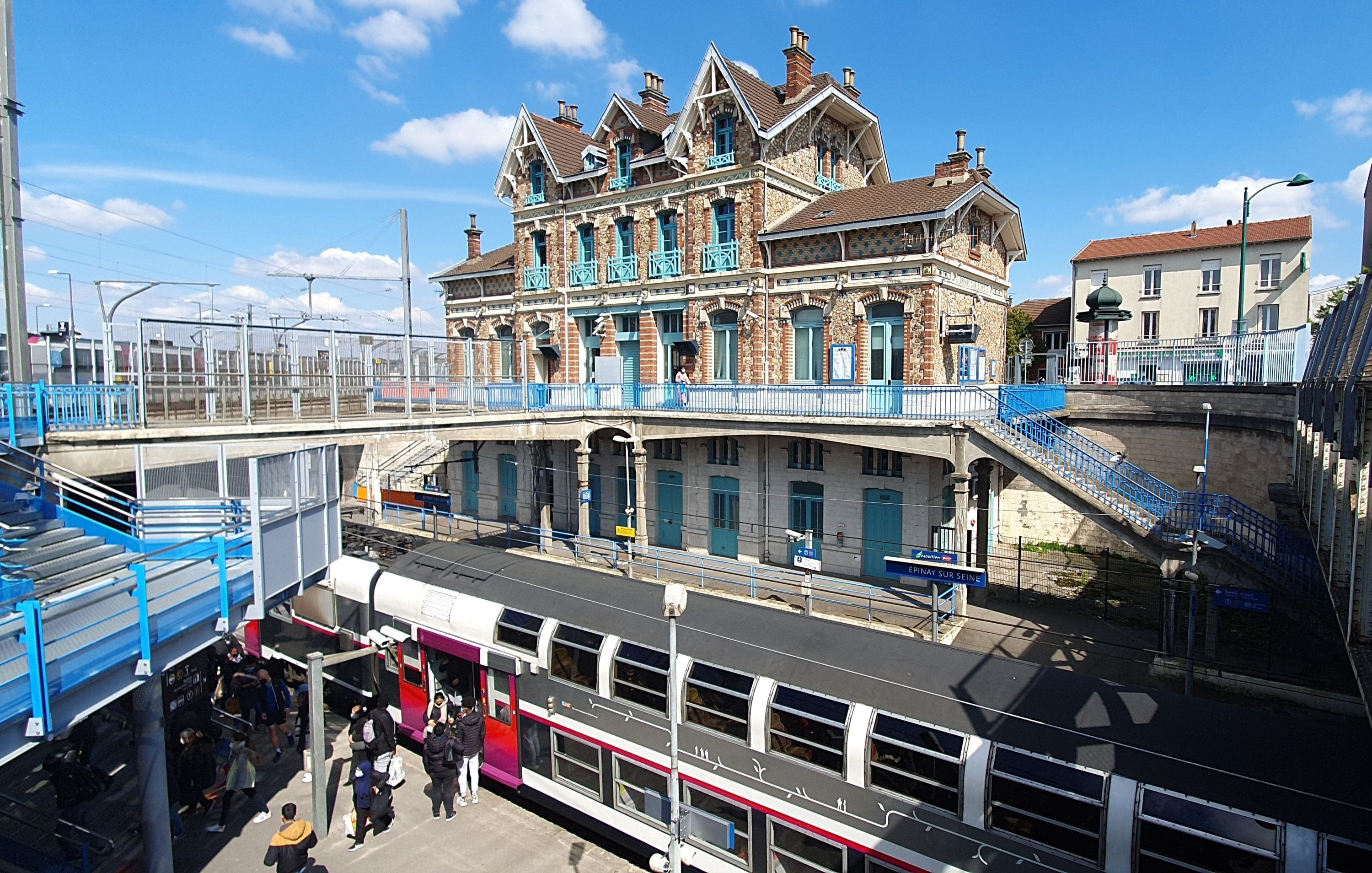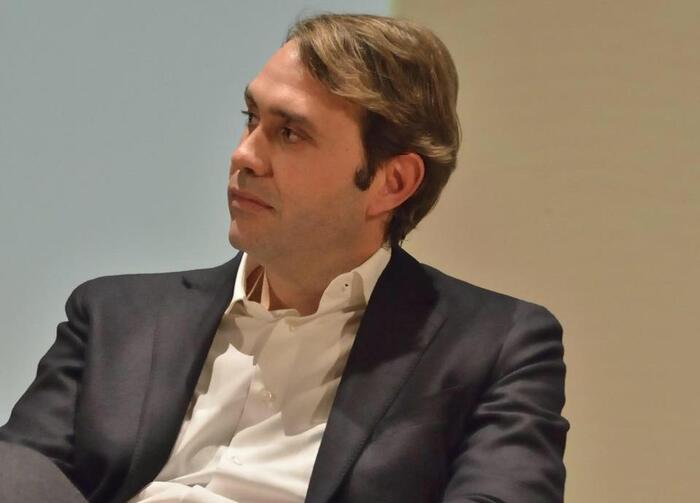With its turquoise blue woodwork, millstone walls and ceramic friezes, the Epinay-sur-Seine station is more like the terminus of a seaside town than a suburban RER station.
In the two floors of this surprising building recently labeled as a heritage site of regional interest, the former apartments of the station master and his deputy will be transformed into shared workshops.
About twenty eco-craftsmen, selected beforehand, will put down their tools, share the cutting machines and compare their know-how.
The candidates for hire, who will be recruited this fall, will have in common their working methods based on the recycling of materials and respect for the environment.
A return to life for the 220 square meters of the two staff housing, which had been abandoned for a long time.
A nursery to help young designers
This small factory, called the Circular Routes, should open at the beginning of next year, after work to bring it up to standard and interior reorganization.
“Our project is designed around issues of reuse, zero waste and eco-design,” explains Elie Prévéral, from the Pointcarré cooperative, which carries the idea of shared workshops.
Craftsmen adapt their production techniques to the requirements of sustainable development.
For example, they don't use harmful solvents or bypass product obsolescence.
"
Individual workbenches but also shared equipment will be offered to designers who will fashion textile products, objects and small furniture.
The Pointcarré cooperative benefits from a ten-year lease based on a rent of 1000 euros per month.
“We want the circular routes to be a breeding ground for young artisans who navigate from one transitory place to another, as they close.
Here, we will offer them stability, ”says Elie Prévéral.
The factory, which will not welcome the public, will be doubled with a sales and exhibition room of 35 square meters, still located in the railway right-of-way, but on the other side of the platforms.
To read also "It's striking to see the quality of these creations": these craftsmen who make Paris shine
This economic model was born in Epinay, thanks to the call for projects launched in 2019 by SNCF Gares et Connections, with the participation of Ile-de-France Mobilités, the regional transport authority.
The two partners each bear half of the amount of 300,000 euros for the rehabilitation of housing.
An operation where each of the parties is the winner: the operator of the rail network, which brings life back to its stations, and the winner of the call for projects, who would never have had the means to open such a place on their own. .
"Provide services"
"We are working on stations where traditional commerce would not work, either because they are too out of the way and the flow of travelers is insufficient, or because they are complicated to fit out with vacant floor space", confirms Catherine. Priol, director of commercial and real estate development at Gares et connections. “In these cases, we look more towards the territories where we are established, with the idea of providing services there,” she continues. We rely on social and solidarity economy companies, associations or start-ups. "
In Ile-de-France, between 30 and 50 stations - out of the 385 that make up the SNCF network - benefit from calls for projects of this kind, within the framework of the 1001 stations system.
Art-oriented day nursery, multiservice boutique, coworking areas, recruitment and integration spaces… All categories emerge.
Read also Saint-Denis: at Pointcarré, meeting and cooperating, that's the idea
A new revitalization program has also just started, this time for 35 other small stations in the outer suburbs.
Their particularity: passenger traffic does not exceed 1,500 people per day.
This experiment is also being carried out with Ile-de-France Mobilités, which will finance 100% of the work to provide the premises.
For Elie Prévéral, moving to the Epinay resort is a real economic challenge: “We want to show that our workshops, shared around sustainable development, are positioned in a sector that generates activity and employment and that they are a door open to the world of tomorrow.
"
Creating while recycling: the example of the designer from L'Ile-Saint-Denis
Ile-Saint-Denis, April 13, 2021. Françoise-Bonthe Diallo, designer and visual artist, has set up her workshop on a barge.
She makes lighting, jewelry and objects, in particular from recovered or recycled materials.
LP / CG
Françoise-Bonthe Diallo's working environment is a barge moored on the Seine, in L'Ile-Saint-Denis.
Sheltered behind a thick curtain of greenery in summer, the artist also has a view of the large towers of Villeneuve-la-Garenne (Hauts-de-Seine), posted on the other bank.
It is here that she creates lighting, jewelry and decorative objects, notably from metal, plastic and photos.
The designer, who partly uses recycled materials, plans to pass on her experience as part of the shared circular routes project that the Pointcarré cooperative will set up within the RER station of Epinay-sur-Seine.
“What interests me is being able to work in association with other craftsmen,” explains Françoise-Bonthe Diallo.
You can learn new technical approaches.
Meeting other looks stimulates the intellect and enriches.
"
In addition to exchanges between professionals, the circular routes will also be a showcase for its residents.
"There will be a place that should serve as a point of sale," confirms Françoise-Bonthe Diallo, who was a lawyer in real estate, in a previous life.
The visual artist uses ingenuity and cunning to design her creations, with elements that are partly diverted or transformed.
“I have been working with materials by recycling them for twenty years,” she explains.
With one nail, I can make a ring.
"
A bottle of wine will be the starting point of a light, a crushed, hammered or rolled coin becomes a jewel… Plastic containers for beer turn into terrariums for plants.
"Once the object is finished, we must not see that it was initially waste," notes Françoise-Bonthe Diallo.
She shares her know-how through training, the next of which will be devoted to glass recovery.
“I don't like throwing away, I always see a possible new application,” explains the visual artist, who even finds inspiration in the twisted metallic ribbons of iron straw sponges.















